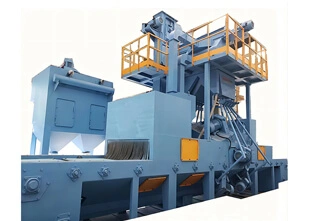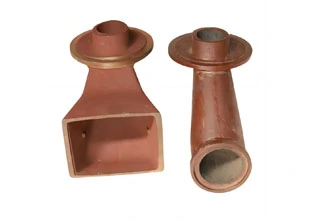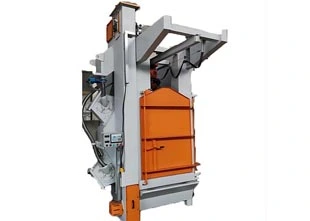In the field of surface preparation, no two surfaces are the same. Given the wide variety of materials used in manufacturing and construction, different surface preparation techniques have been developed to meet specific needs. Among these, shot blasting stands out as one of the most efficient and effective methods.
Because multiple abrasive blasting techniques exist, their terms are often used interchangeably, leading to confusion. However, understanding the key differences between shot blasting and other methods is crucial for selecting the right process for a given application.
Abrasive Medium
One of the primary distinctions between shot blasting and other surface preparation methods is the type of abrasive medium used.
Shot blasting relies almost exclusively on metallic abrasives, such as carbon steel shot or carbon steel grit, which are highly durable and reusable.
Other abrasive methods may use a wider variety of media, including glass beads, aluminum oxide, plastic beads, crushed walnut shells, or even sand. These alternatives are often chosen for softer materials or specialized applications where metal abrasives would be too aggressive.
Blasting Technique
Another significant difference is the method used to propel the abrasive material toward the surface.
Shot Blasting: This process involves loading the abrasive medium into a centrifugal wheel, which rapidly accelerates the particles and propels them at high velocity onto the target surface. Shot blasting is typically performed in a closed chamber within a dedicated machine, ensuring efficiency and dust control.
Other Blasting Methods: These methods generally use compressed air or water to project the abrasive medium onto the surface. While effective, they generally operate at lower velocities than shot blasting. As a result, they are better suited for applications requiring more delicate surface treatment.
Choosing the Right Surface Preparation Method
The selection of the appropriate blasting technique depends on material type, production volume, and desired finish.
Shot Blasting is ideal for heavy-duty applications, particularly for cleaning or preparing metal surfaces. It is widely used for removing rust, scale, and old coatings from steel structures, machinery, and automotive parts. The process is highly automated, making it efficient for large-scale operations.
Other Blasting Methods are preferred for delicate materials such as plastic, aluminum, wood, stone, or glass. These techniques are also commonly used when working with machinery containing sensitive electrical components. Many of these processes require more manual labor, making them less efficient for high-volume production but more suitable for precision work.
While various surface preparation methods exist, shot blasting remains the preferred choice for industrial applications requiring aggressive and efficient cleaning. However, for more fragile materials or specialized needs, alternative blasting methods provide a more controlled approach. Understanding these differences allows businesses to select the most suitable technique for their production needs, ensuring optimal surface preparation and finishing quality.
 English
English


